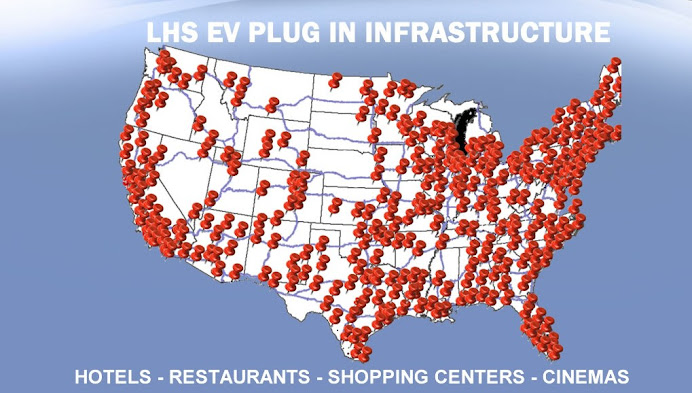 Major car companies are starting to vote on their choice for the “car and fuel of the future” with big bets on manufacturing capacity. The winner, no surprise, is going to be highly efficient plug-in hybrid electric vehicles and pure electric vehicles.
Major car companies are starting to vote on their choice for the “car and fuel of the future” with big bets on manufacturing capacity. The winner, no surprise, is going to be highly efficient plug-in hybrid electric vehicles and pure electric vehicles.Plug-ins and EVs are a core climate solution, since electric drives are more efficient, easily powered by carbon-free energy, and far cheaper to operate per mile than gasoline or any alternative fuel, especially hydrogen, even when running on renewable power.
And they are the key alt-fuel strategy needed to deal with the energy/economic security threat of rising dependence on imported oil and the inevitably grim impacts of peak oil. No surprise, then, that Toyota is planning on a major rollout of its plug in:Toyota Motor Corp plans to start mass producing plug-in hybrid vehicles in 2012, with a projected first-year output of about 20,000 to 30,000 units.
We also have some details on the cost and all-electric range of the Toyota plug in: Toyota wants to price its plug-in hybrids at a comparable price to Mitsubishi Motors Corp’s all-electric car, which debuts this month to fleet customers in Japan at 4.59 million yen ($47,800) before government subsidies, without citing sources….Toyota’s plug-ins will be able to run 20-30 km (12.4-18.6 miles) on battery power alone at full charge, the paper said. It always bears repeating that after the battery charge is exhausted, the car will revert to being a highly fuel-efficient “conventional” hybrid that runs on gasoline. Toyota appears to be making a shrewder decision on the all-electric range than GM, which says it is giving the Chevy Volt a too-large 40-mile capacity. Ford had made clear in its restructuring plan last year that the future fuel is electrons: The next major step in Ford’s plan is to increase over time the volume of electrified vehicles, as battery costs improve and as the transition from Hybrids to Plug-in Hybrids to Battery Electric Vehicles occurs.
Now Reuters reports: Ford plans to introduce a battery-powered commercial van in 2010, a battery-powered small car the following year and a plug-in hybrid to challenge General Motors Corp’s highly touted Volt starting in 2012. Those plans put utilities and battery companies “at the center of the universe” for automakers, Ford CEO Alan Mulally said. Ford, the first of the U.S. automakers to roll out a hybrid, has made a renewed commitment to the technology a centerpiece of its turnaround plans…
Within a decade, automakers and utility companies expect to make commonplace two-way communication between vehicles and an interactive utility power grid that will solidify their cooperation. Utilities are expected to install millions of “smart meters” at homes that would signal the car’s computer when the power grid is strained, and power expensive, so charging can be suspended.For now, the goal is simply to convince motorists to plug in, said Nancy Gioia, Ford’s director of hybrid vehicle programs.
Gioia projects that “from 10 to 25%” of Ford’s production by 2020 will be some type of electrified vehicle. General Motors, of course, has long been touting its efforts to electrified vehicles: GM, now operating under a federally funded bankruptcy, has also pledged to have more plug-in hybrids and even pure electric vehicles for city driving in the future….Britta Gross, GM’s director of global energy systems and infrastructure commercialization, would not offer a percentage for plug-ins and other types of electric cars, but said GM would “do the heavy lifting” trying to meet the moonshot-like goal set by President Barack Obama to have 1 million plug-in hybrids on U.S. roads by 2015. Finally, we can move beyond the rhetorical hype about what low-carbon alternative fuel vehicles American consumers might be driving in the foreseeable future, and on to the manufacturing and practical reality of plug-ins and EVs.
Source : grist.org, by Joseph Romm, July 21st, 2009
 American carmaker Velozzi has launched a crossover plug-in hybrid car with an on-board micro turbine battery charge — the Solo should be capable of reaching 100km/h (62 mph) in under six seconds and top 220km/h (136 mph) while sipping just 2 litres per 100km (117 MPG).
American carmaker Velozzi has launched a crossover plug-in hybrid car with an on-board micro turbine battery charge — the Solo should be capable of reaching 100km/h (62 mph) in under six seconds and top 220km/h (136 mph) while sipping just 2 litres per 100km (117 MPG).
















